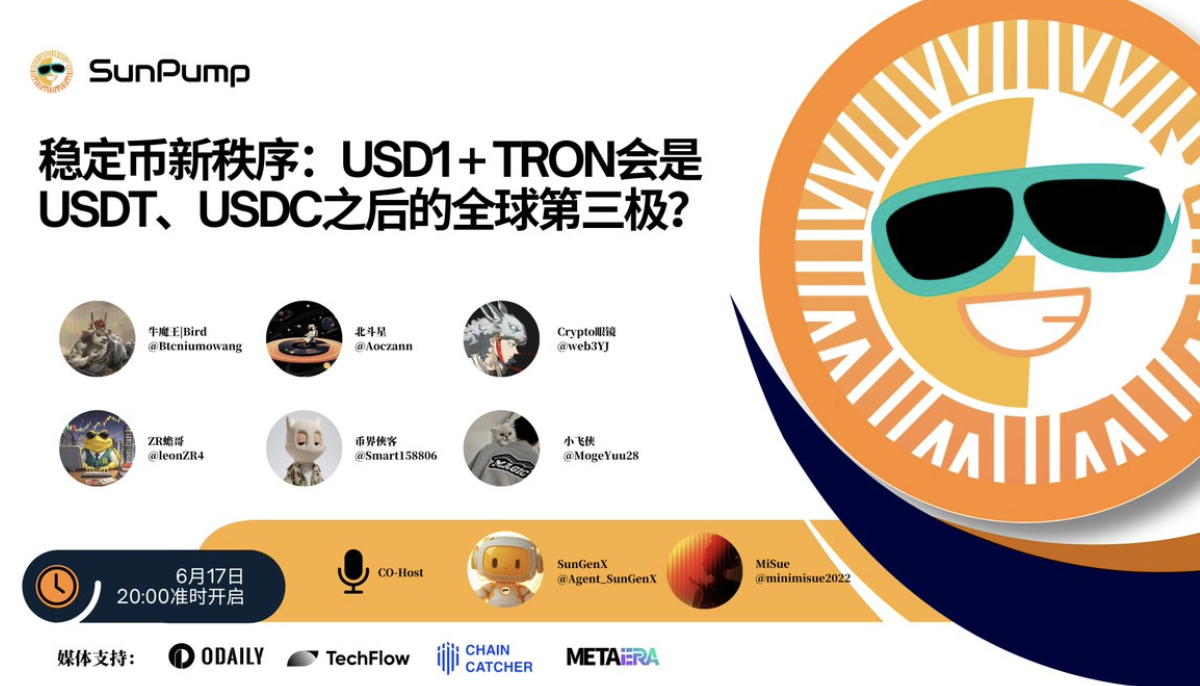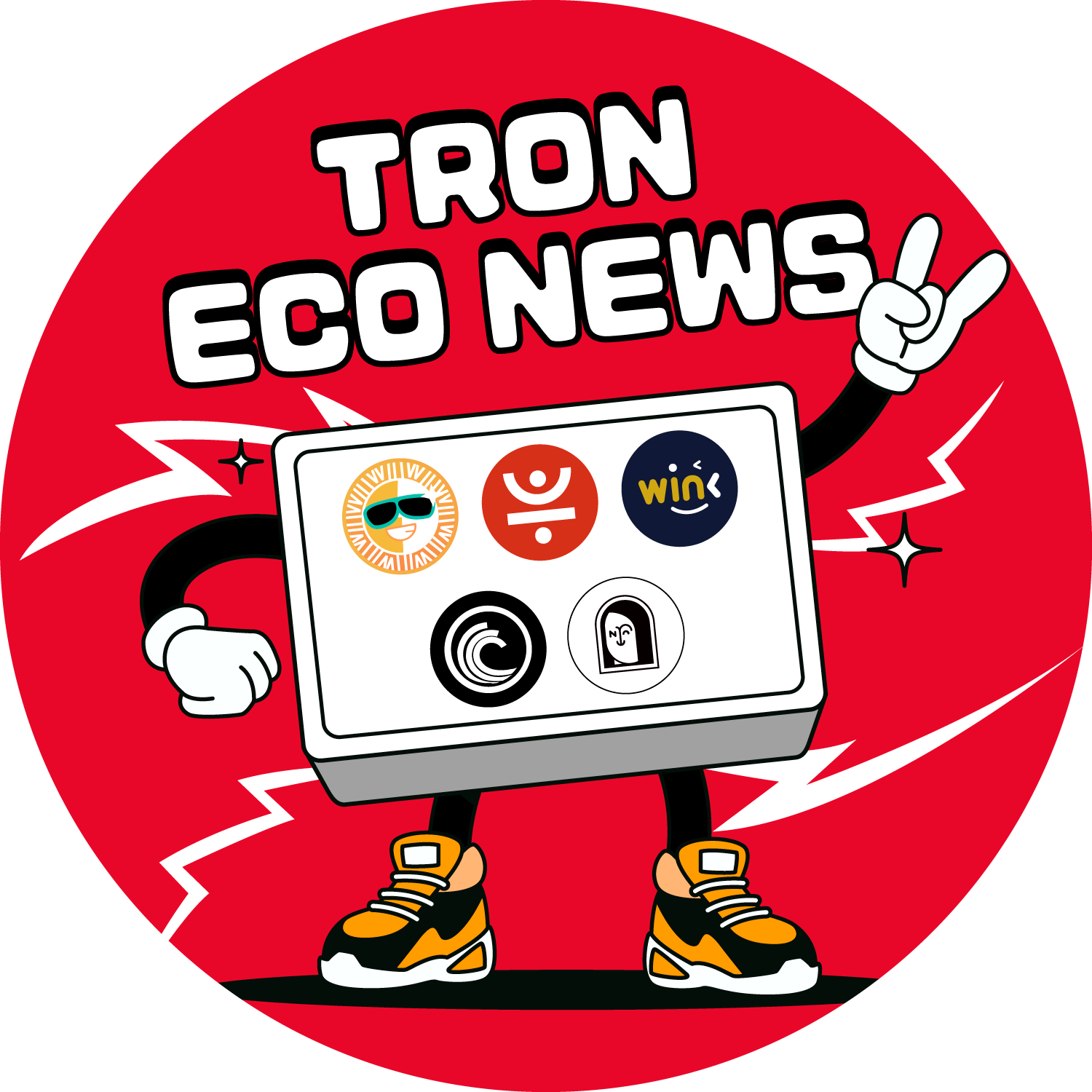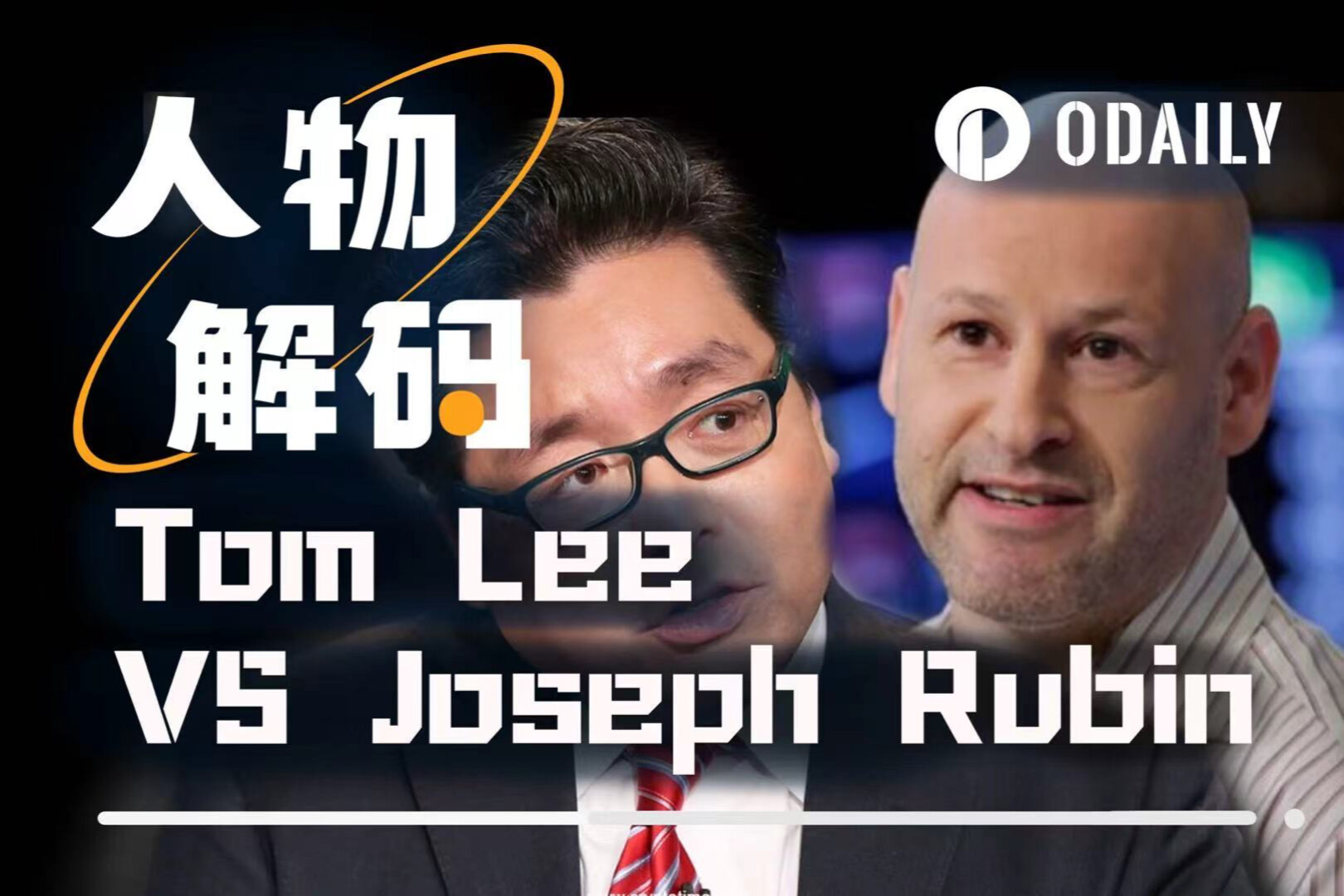In June 2025, the USD1 stablecoin supported by the Trump family officially landed on the TRON network. This move was seen as a direct challenge to the monopoly of USDT and USDC, and quickly sparked heated discussions in the market.
At 8pm on June 16, the #SunFlash roundtable started an in-depth dialogue at X Space with the theme of "New Order of Stablecoins: Will USD1+TRON become the third pole in the world after USDT and USDC?" This Space brought together many senior industry KOLs to conduct in-depth analysis on whether USD1 has a chance to break through the siege from the dimensions of technical capabilities, asset models, compliance, capital paths, etc., and whether the TRON chain is capable of playing the role of the "third pole" stablecoin.

In June 2025, the stablecoin market is experiencing a critical change. World Liberty Financial, the Trump family cryptocurrency project, integrates its USD1 stablecoin into the TRON network. This milestone not only consolidates TRON's position as the "first public chain" for stablecoins, but also pushes the combination of USD1 and TRON to the forefront of the industry: As the stablecoin market becomes increasingly solidified, can USD1 become a true "third pole" with its political capital and TRON's technology and ecology?
Behind this stablecoin competition is the comprehensive upgrade of the TRON ecosystem. From the absolute dominance of USDT to the strong entry of USD1, TRON is transforming from a "stablecoin channel" to a "financial infrastructure". The success or failure of USD1 is not only related to the survival of a single stablecoin, but also to whether TRON can truly carry the industry's expectations of the "third pole". This article will focus on the core insights of the roundtable and review the guests' wonderful dialogue and unique insights.
1. USD1, the game-changer: Challenging the duopoly of USDT and USDC
The current global stablecoin market presents a clear duopoly pattern, with USDT and USDC together accounting for nearly 90% of the market share. However, the guests generally believe that both are facing structural bottlenecks, and USD1 is breaking through the monopoly barriers of the two giants with its advantages of political endorsement, capital flexibility and sovereign independence.
USDT and USDC bottlenecks
Beidouxing pointed out: "The EU MiCA Act requires that stablecoin issuers must be licensed and reserve assets must be strictly anchored to the pegged currency, which may cause exchanges such as Coinbase to remove USDT trading pairs in Europe. In addition, its long-standing reserve transparency issues further exacerbate the risk. Although it claims a 1:1 US dollar reserve, the actual issuance volume often fluctuates with market demand and deviates from the initial commitment." Beidouxing further added: "Although USDC is known for its compliance and uses 100% US debt and cash reserves, it also exposes its over-reliance on the traditional financial system."
Emerging Demands and the Rise of the Third Pole Space
The market demand for non-traditional stablecoins is breaking through the monopoly barriers of the two giants. Peter Pan believes that the growth stagnation of the two giants is "inevitable" because it is difficult for them to break through the triple bottlenecks of regulatory adaptability, profit model sustainability and product innovation, which creates opportunities for new stablecoins to differentiate themselves.
Regarding the future development trend of the stablecoin landscape, Coin World Knight pointed out: "In the future, there may not be only one or two large stablecoins dominating. Instead, there will be more diversified, hierarchical, and more adaptable stablecoin ecosystems, which is in line with the trend of decentralized and multipolar development of global finance."
USD1 core competitiveness: political endorsement and capital flexibility
ZR Change pointed out that USD1 can meet the needs of multiple scenarios with its multi-chain deployment and flexible issuance mechanism. Peter Pan believes that USD1's sovereign independence has two sides: on the one hand, it has escaped the supervision of a single country to a certain extent through the "decentralized governance committee" mechanism, and is better than USDC in terms of censorship resistance; but on the other hand, its reserve assets are still highly dependent on the US debt system, and it has not essentially broken away from the framework of US dollar hegemony. If users want to pursue censorship resistance, USD1 is a better choice. But if users want to pursue legal stability, USDC has more advantages.
However, the Coin World Knight raised an opposing view. He believed that USDC's strong compliance made it the first choice for traditional financial institutions, but it also exposed the shortcomings of concentrated policy risks (such as changes in US regulation that may lead to asset freezes), while USD1 attempted to balance regulatory pressure through political resources and was more suitable for diversified cross-border settlement needs. The Coin World Knight emphasized that USD1 did show stronger sovereign independence and global applicability compared to USDC, and was a very valuable stablecoin form for the future cross-chain financial transnational business ecosystem .
2. USD1 + TRON, a powerful alliance to create a new stablecoin ecosystem
In the competitive landscape of the stablecoin market in 2025, where "regulatory differentiation" and "technological breakthrough" coexist, the TRON chain has built a differentiated ecological moat for the emerging stablecoin USD1 with its processing capacity of 2500+TPS per second, extremely low transaction costs, rich ecological applications and anti-regulatory capabilities. Relying on the technical empowerment of the TRON network and the integration of the Trump family's political capital, USD1 has achieved rapid penetration in emerging markets such as Southeast Asia and Africa, with a circulation volume exceeding US$2.1 billion.
Beidouxing pointed out that the core value of USD1 choosing TRON as the first main chain lies in its multiple compound advantages:
1. Dominance in high-frequency payment scenarios: TRON has an advantage in B2B instant settlement, cross-border payment, small-amount transfer and other scenarios due to its high throughput, low cost and rich ecological applications. This feature has attracted a large number of retail investors and small and medium-sized merchants, forming user stickiness.
2. Regulatory adaptability design: Through the Bubblemaps V2 compliance traceability system, while anonymizing the TRON address, the necessary regulatory information is saved by establishing a compliance metadata layer. This "visual anonymity" technology not only meets the requirements of the General Data Protection Regulation (GDPR), but also complies with the regulatory standards of the Financial Action Task Force (FATF), and has been highly recommended by the EU Blockchain Observatory.
Niu Mowang explained from the perspective of infrastructure: the TRON network is essentially a "financial highway". Its technology stack (such as the energy pledge mechanism) reduces the transfer cost to almost zero while maintaining high concurrency, which can help users quickly enter the usage scenario. This payment efficiency comparable to Visa has enabled TRON to build a "moat" in scenarios such as cross-border remittances and merchant settlements.
3. The TRON stablecoin ecosystem continues to expand, providing large-scale operating space for USD1
The reason why TRON has become the main battlefield for the practical application of stablecoins is the dual empowerment of the "low-cost + high-efficiency" technical architecture of the TRON network and the expansion of the DeFi ecological map. ZR Toad Brother gave the key accumulation that TRON has completed since its establishment from the perspective of ecological development:
Closed-loop ecological layout : from the BitTorrent cross-chain protocol to the JustLend lending platform; from the mainstream DEX platform SunSwap to SunCurve focusing on stablecoin transactions, to the SunPump Meme section and APENFT NFT market, TRON has formed a diversified stablecoin application matrix .
Compliance milestone : Successively obtained financial licenses from the UAE, EU and Singapore, clearing the way for global expansion.
The Coin World Knight further pointed out the ecological synergy value of TRON: " TRON has built the world's most mature stablecoin financial scenario, driving the upgrade of stablecoins from trading tools to the "income-payment-asset management" trinity infrastructure. " In his view, TRON's moat is not only the technical parameters, but also the ability to upgrade stablecoins from trading tools to "financial operating systems."
4. USD1 and USDD work together to achieve a diversified stablecoin landscape for TRON
At present, the total circulation of TRON's USDT, USDD, USDJ and other stablecoins has reached nearly 80 billion US dollars, ranking first in the global public chain. With the integration of USD1 into TRON, TRON's stablecoin matrix has been further enriched. The guests believe that TRON has currently built a multi-level, differentiated and complementary stablecoin system .
Peter Pan explained: "TRON is essentially a diversified 'stablecoin supermarket'. USD1 serves compliance scenarios, USDD anchors DeFi's high-yield demand, and USDT continues to serve as a payment channel. The three realize capital circulation through liquidity pool sharing." The Coin World Knight further pointed out the core complementarity of USD1 and USDD: USD1 and USDD constitute a "regulatory-decentralized" dual-track system. USD1's strong auditing features attract institutional funds, while USDD's algorithmic elasticity meets the anti-censorship needs of crypto-native users.
From the perspective of liquidity hub, Beidouxing pointed out that TRON's USD1, USDD, and TRX Vault are forming a benign synergy : the core value of USD1 lies in its strong compliance and authoritative endorsement, while USDD, as TRON's native decentralized stablecoin, maintains currency value stability through algorithmic dynamic adjustment mechanism and over-staking model, which is essentially the practice of the autonomous concept of the crypto-native community. In cross-border payments, the three can achieve a closed loop of "compliance entry-on-chain circulation-income generation".
As the roundtable came to an end, Niu Mowang concluded: "TRON is not simply choosing a 'stablecoin supermarket' or a unified settlement layer, but creating 'species diversity' in digital finance. USD1 is a compliant channel connecting the traditional world, USDD is the value engine of DeFi, and TRX Vault will become the hub oil that lubricates the flow of global capital."
V. Conclusion
At the intersection of technology-driven and political capital, the collaborative experiment of "USD1+TRON" is reshaping the power structure of stablecoins. As the roundtable consensus points out, TRON has built an unprecedented "species diversity" ecosystem for stablecoins through ecological expansion and closed-loop liquidity architecture. If USD1 can continue to balance political empowerment and transparent compliance, and leverage TRON's technical architecture and DeFi ecosystem, its ultimate value and mission will break through the competition of a single currency, and ultimately promote the upgrade of blockchain from a trading tool to a global financial operating system, and promote the next decade of digital finance.



